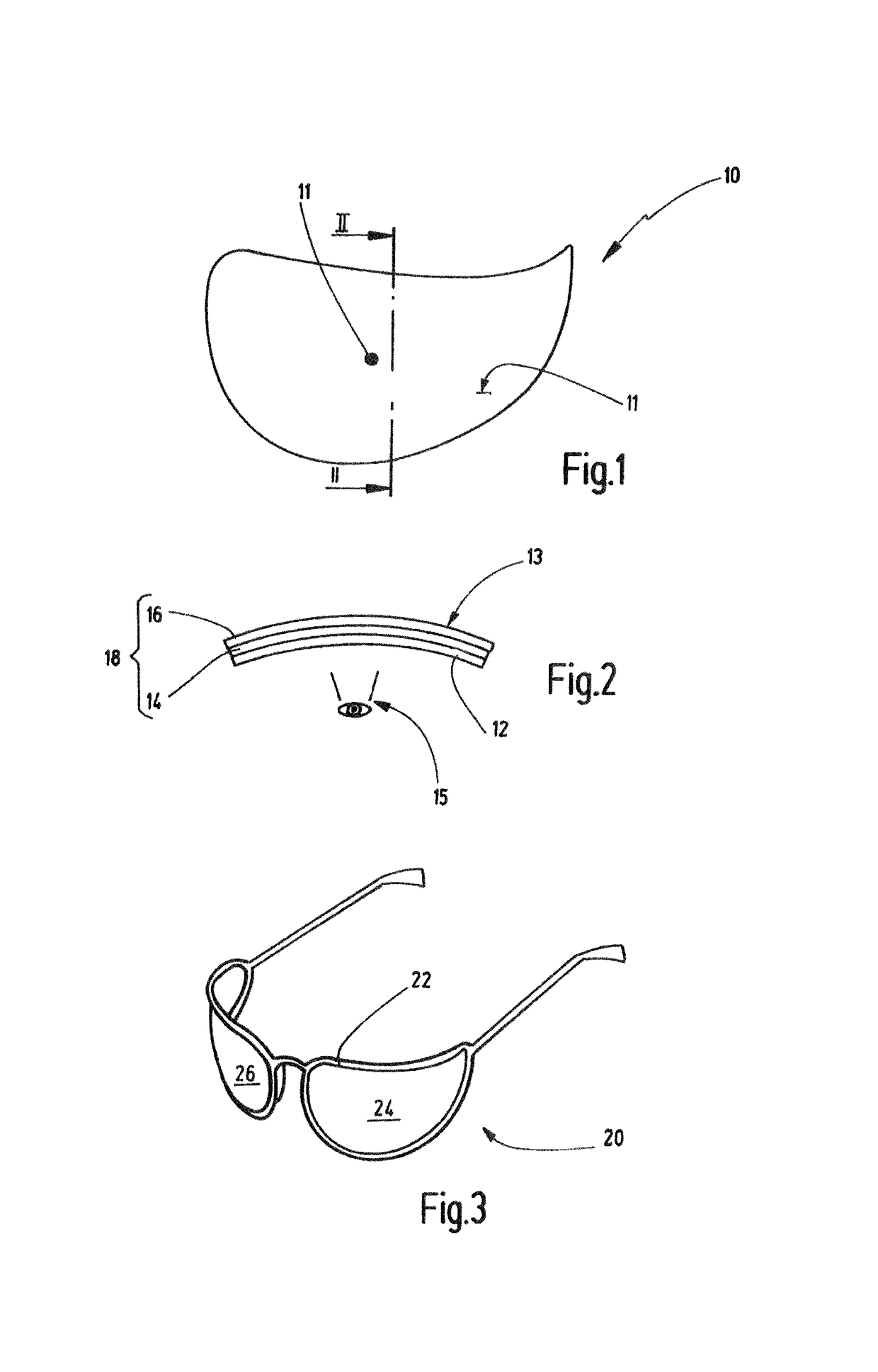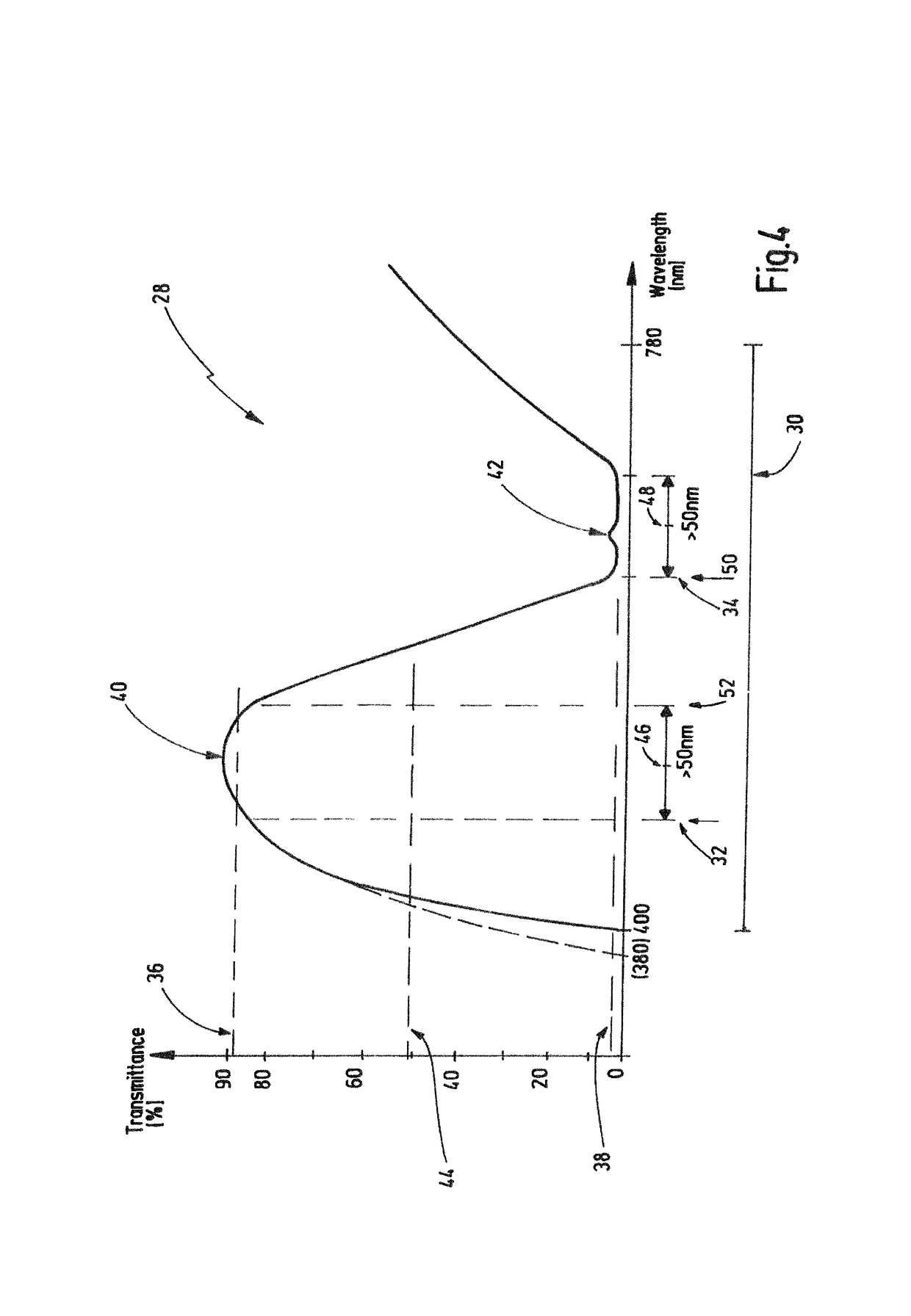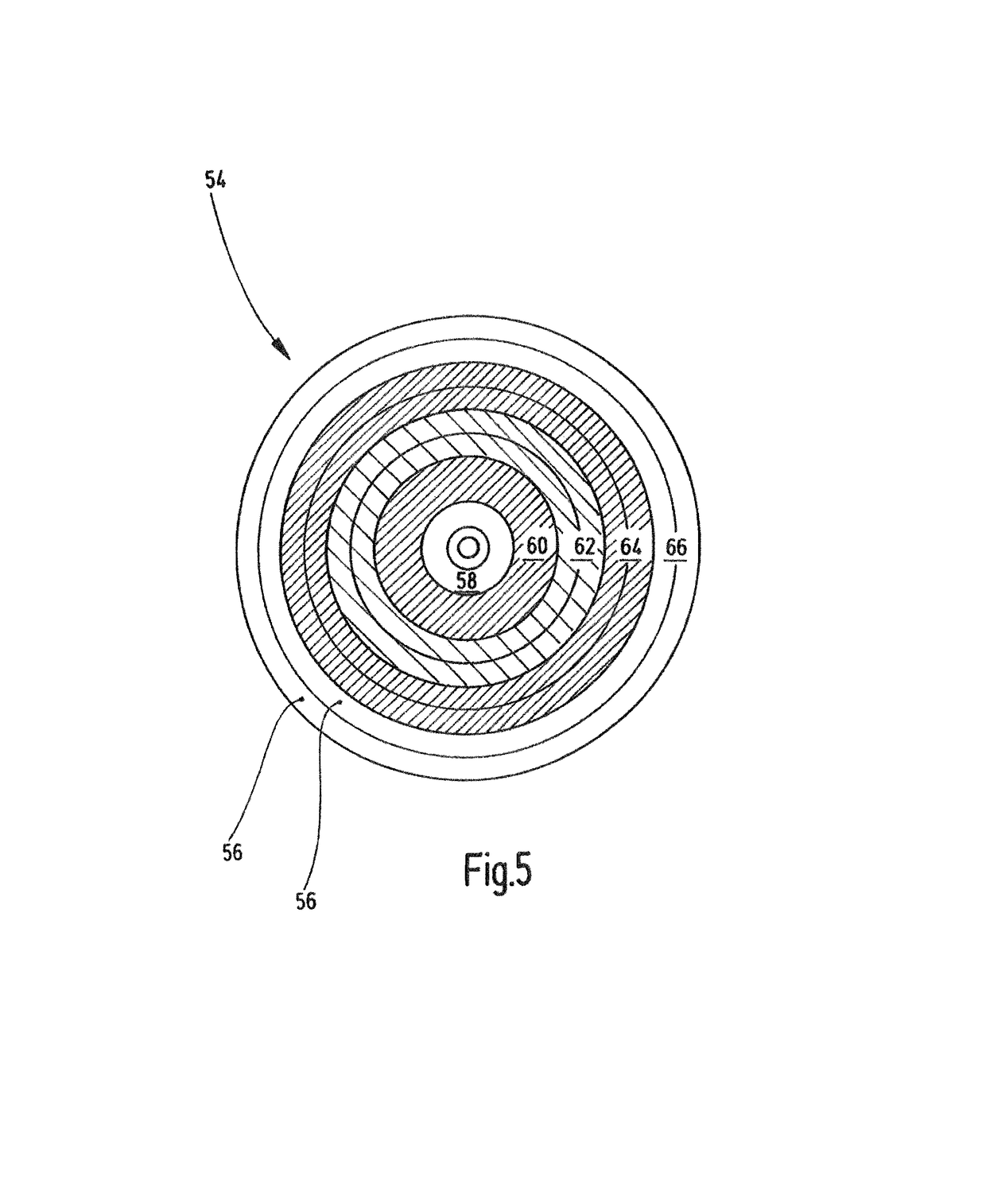Lens and method for enhanced visual targeting of a sports archery target
a sports archery and lens technology, applied in the field of eyewear, can solve the problems of eye fatigue, eye irritation, color blur, etc., and achieve the effect of low transmittance, high overall transmittance, and high transmittance through the lens
- Summary
- Abstract
- Description
- Claims
- Application Information
AI Technical Summary
Benefits of technology
Problems solved by technology
Method used
Image
Examples
Embodiment Construction
[0067]FIG. 1 shows an embodiment of a lens 10. The lens may have any desired shape, in general. The lens may provide for a correction according to a prescription. However, this may not necessarily be the case. In particular, it may be preferred that the lens 10 is a non-prescriptive lens. The lens has a center 11. The center 11 may be on an optical axis of the lens 10. In particular, the center may be the intersection point of the optical axis and the front surface 13 of the lens. As shown in FIG. 2, the front surface 13 is the surface of the lens 10 facing away from the eye 15 of a wearer during use. However, in particular in case the lens 10 should not have an optical axis, the center 11 may be at its boxed center, i.e. the intersection of the horizontal and vertical center lines in the boxing system or box system, in particular in case of an edged lens. Alternatively, it could be the geometrical center in case of a lens blank or uncut lens. For the corresponding definitions, refe...
PUM
 Login to View More
Login to View More Abstract
Description
Claims
Application Information
 Login to View More
Login to View More - R&D
- Intellectual Property
- Life Sciences
- Materials
- Tech Scout
- Unparalleled Data Quality
- Higher Quality Content
- 60% Fewer Hallucinations
Browse by: Latest US Patents, China's latest patents, Technical Efficacy Thesaurus, Application Domain, Technology Topic, Popular Technical Reports.
© 2025 PatSnap. All rights reserved.Legal|Privacy policy|Modern Slavery Act Transparency Statement|Sitemap|About US| Contact US: help@patsnap.com



